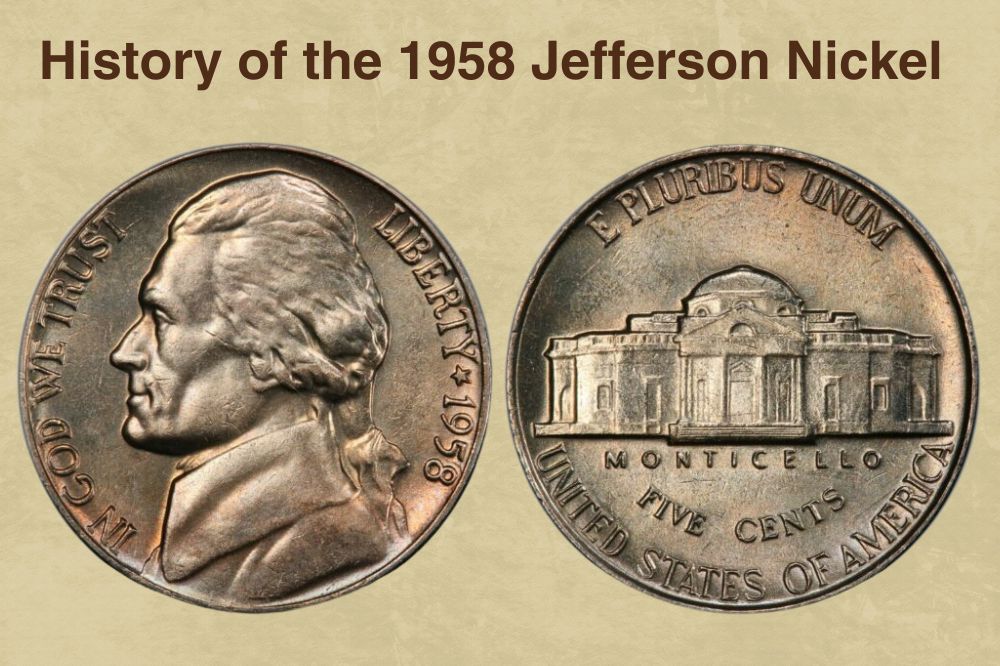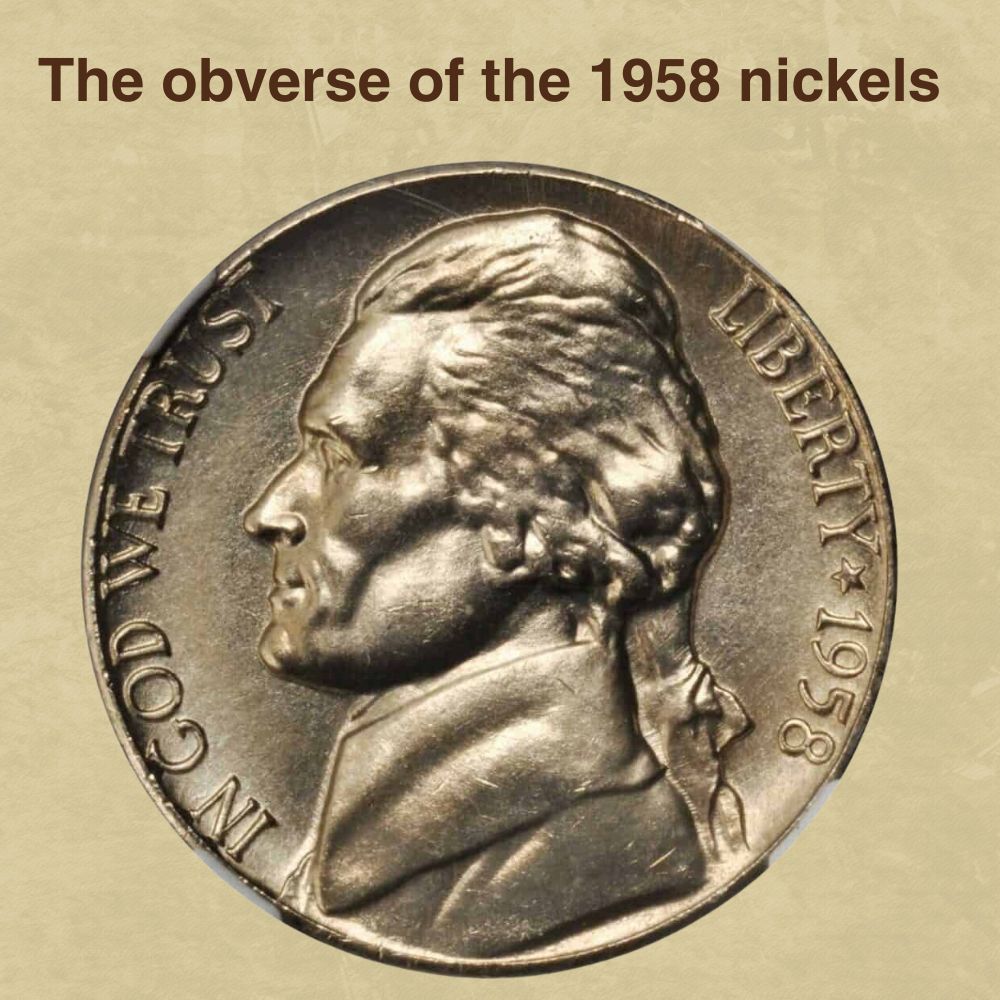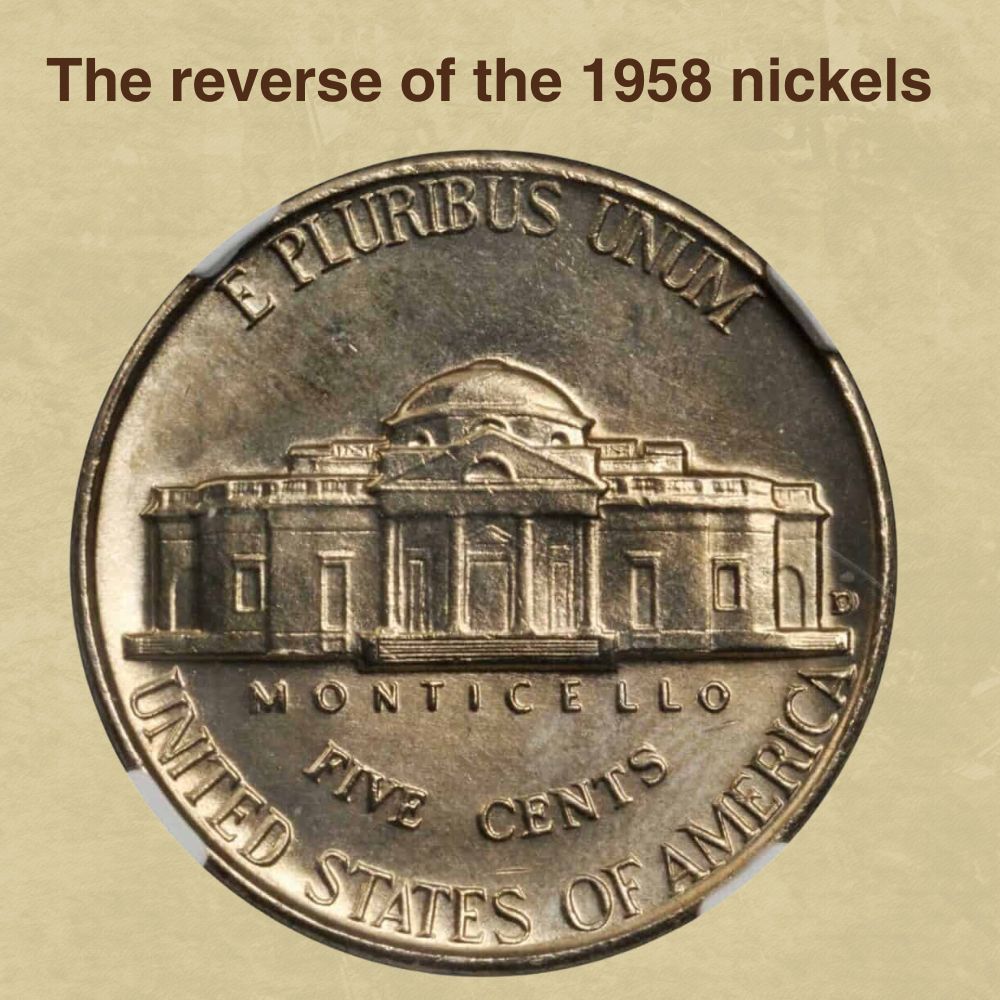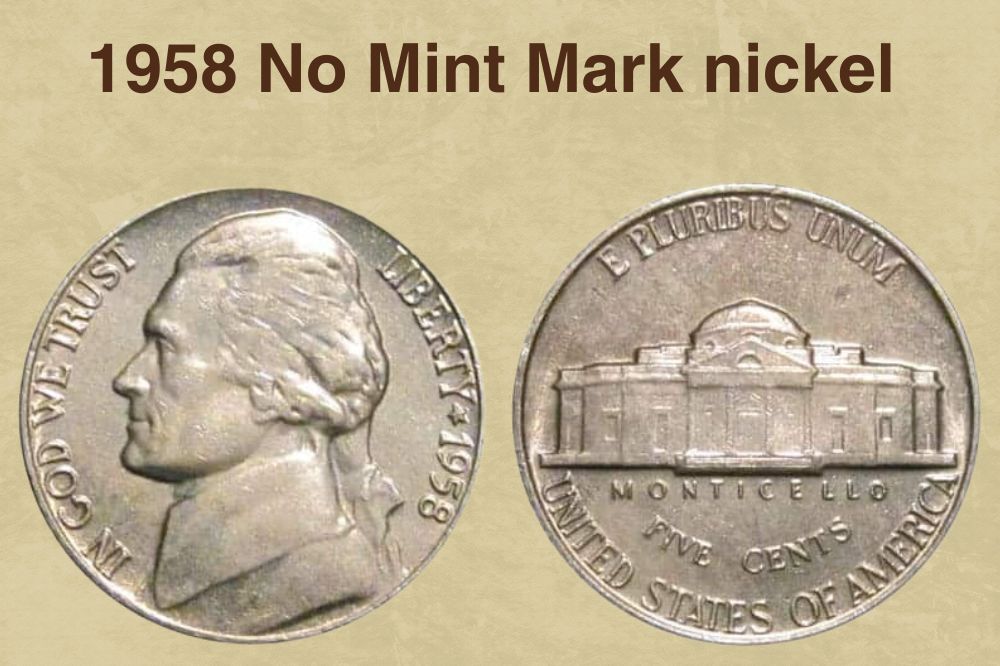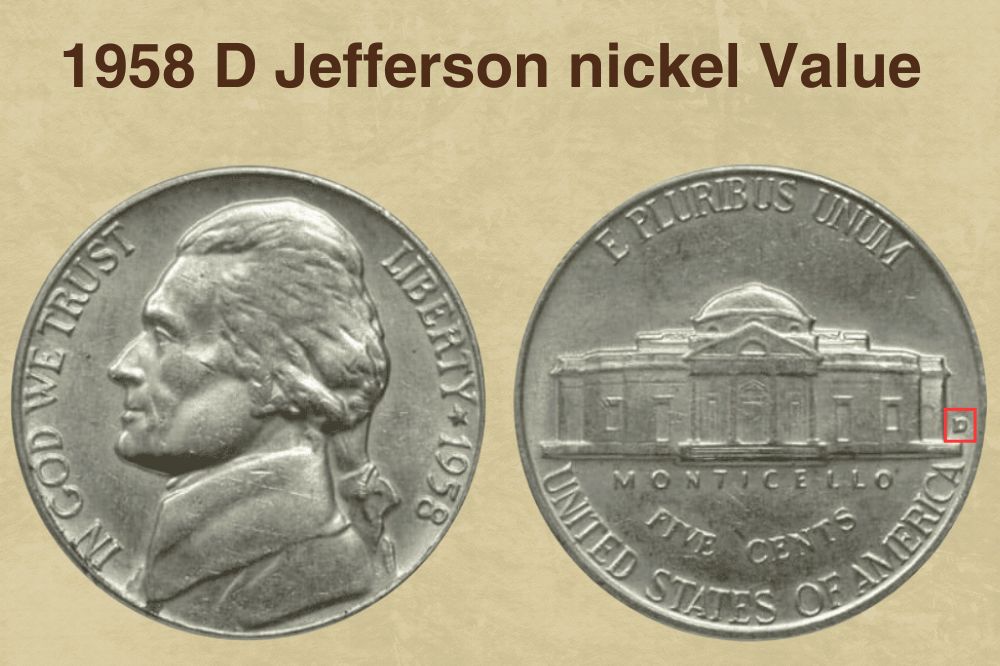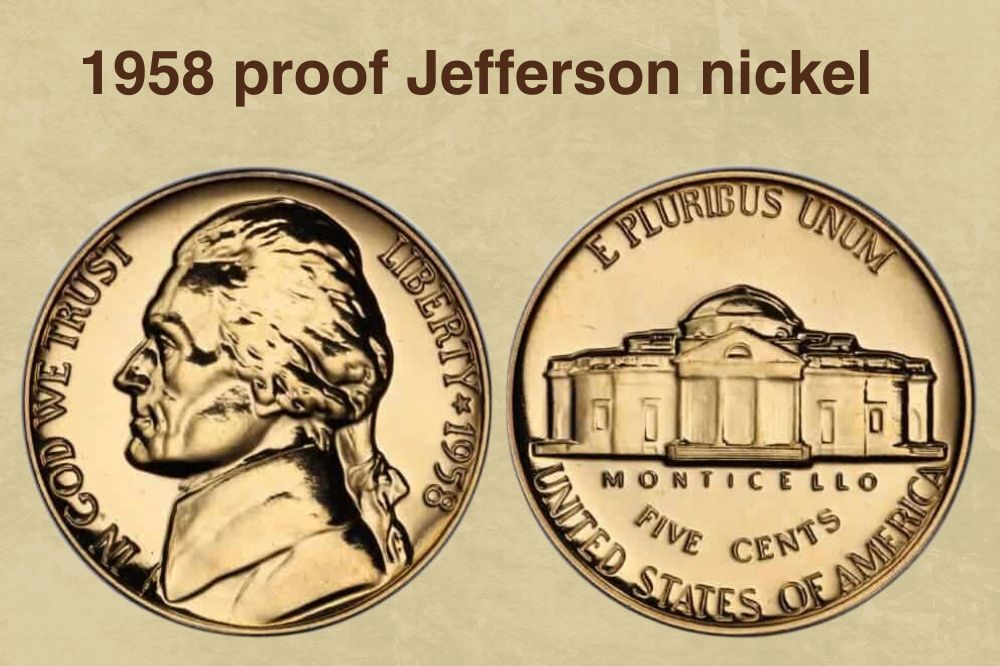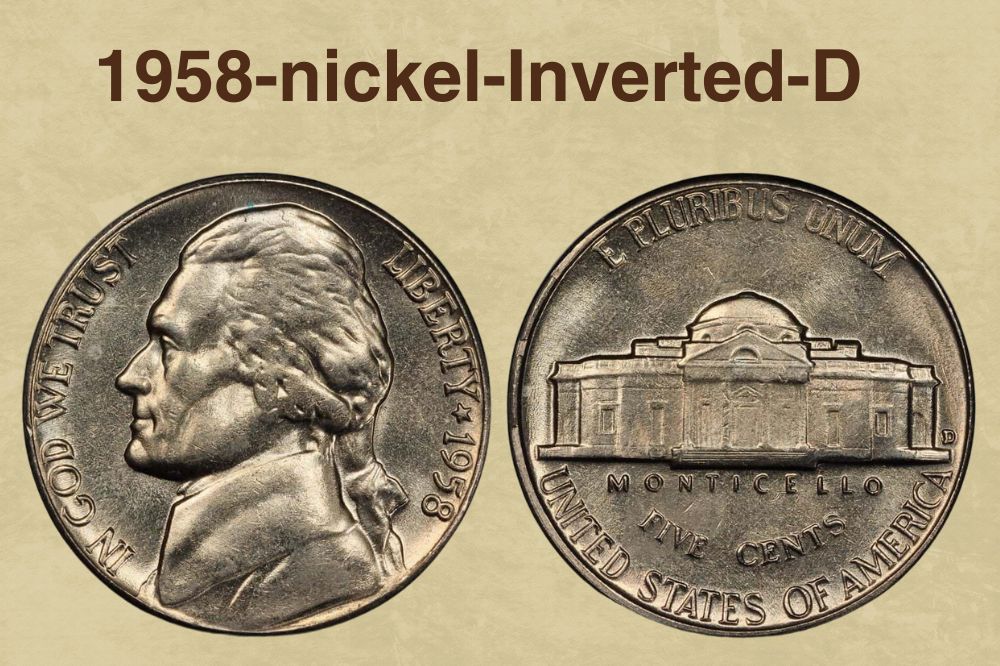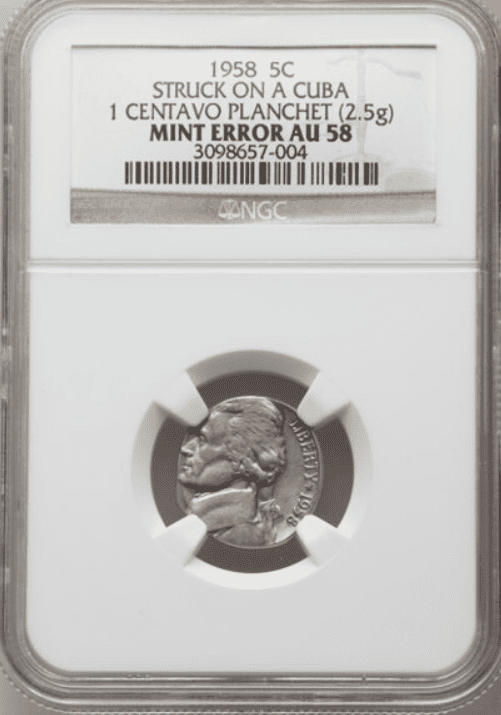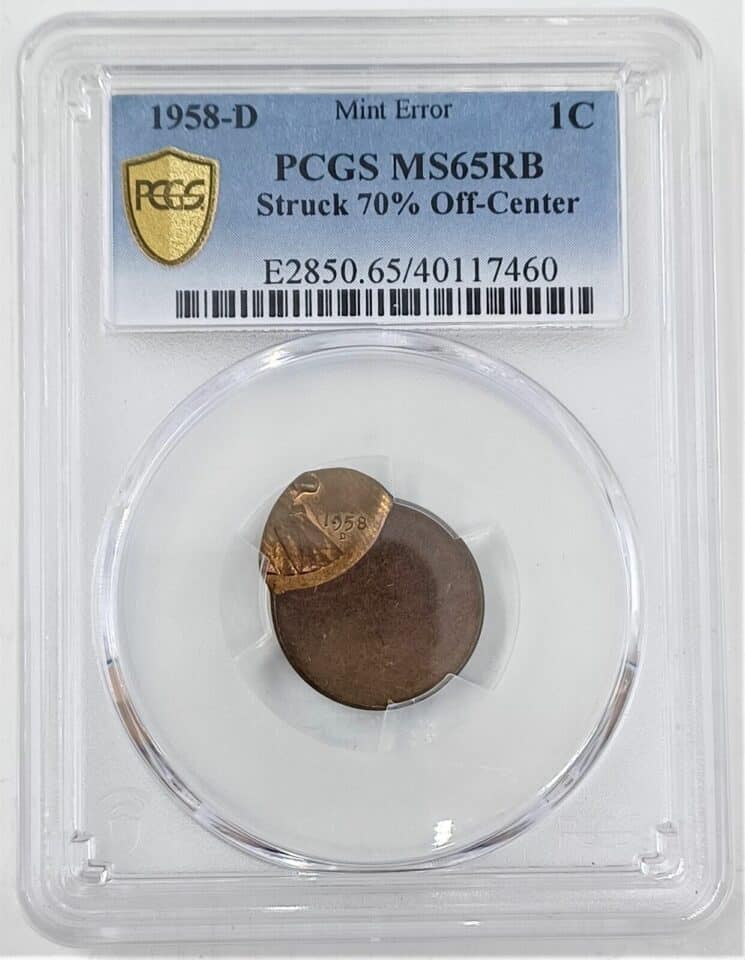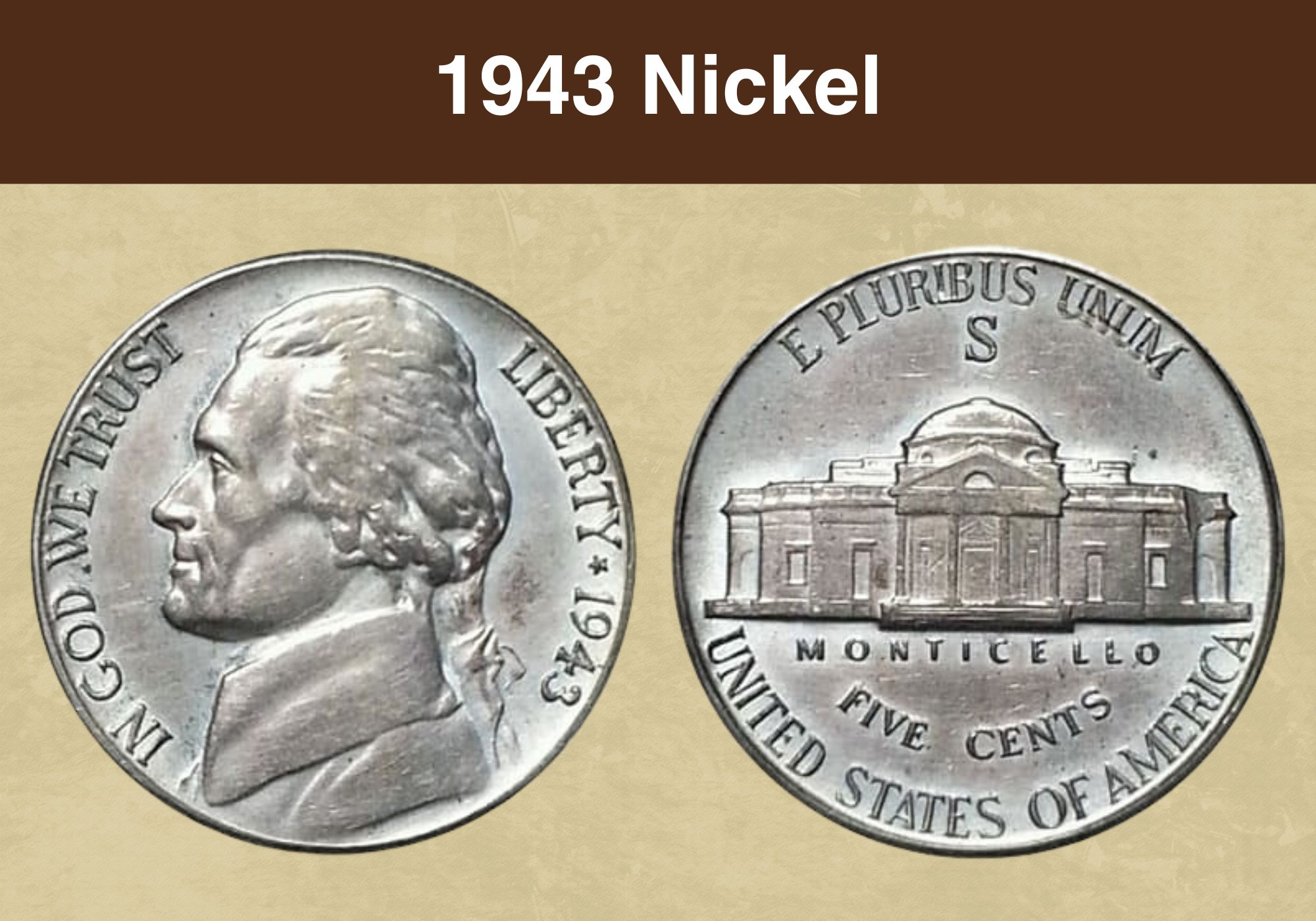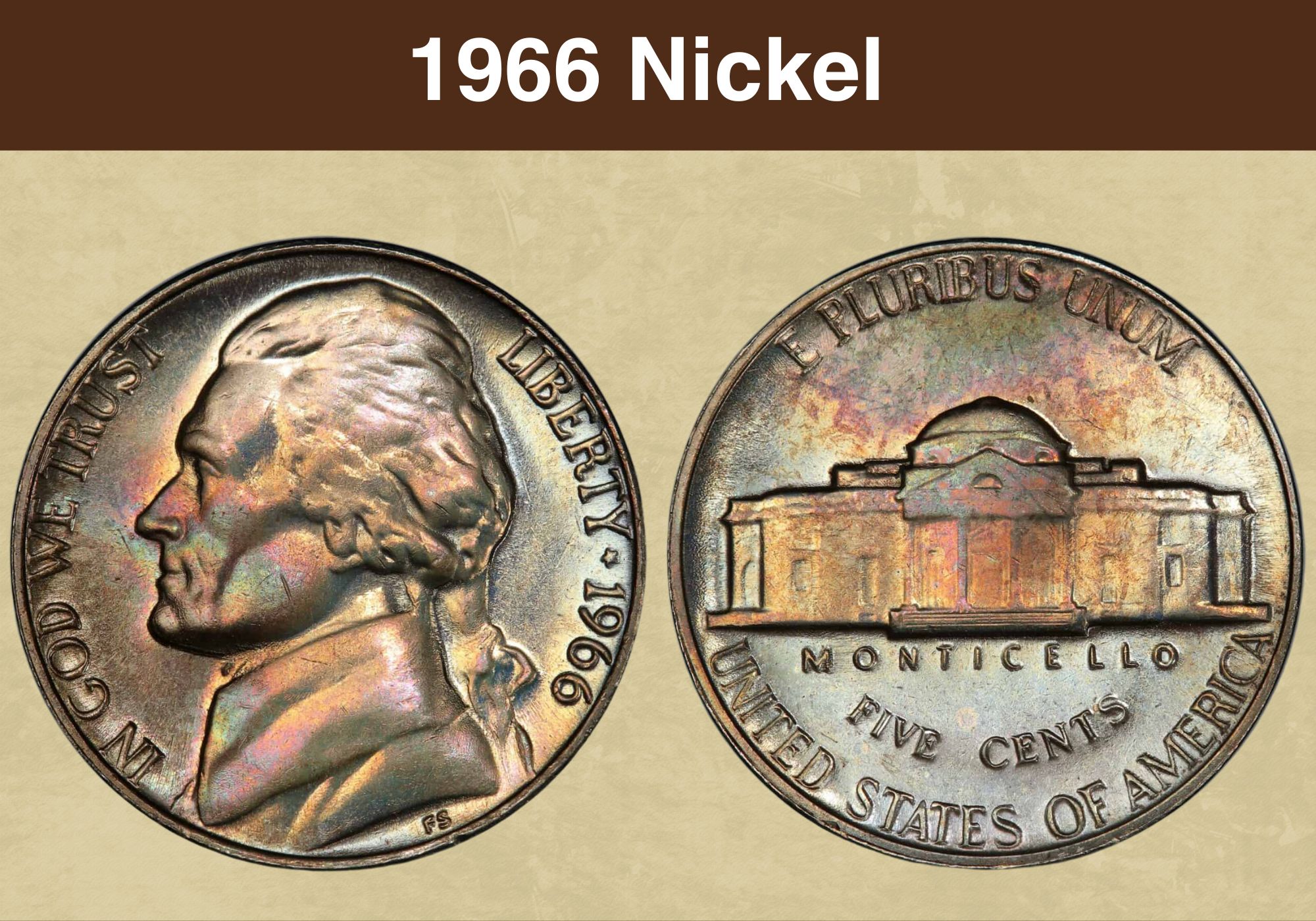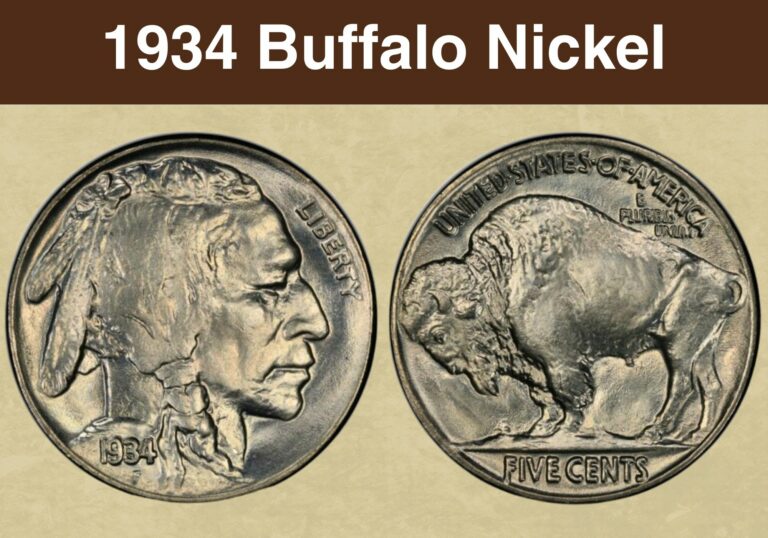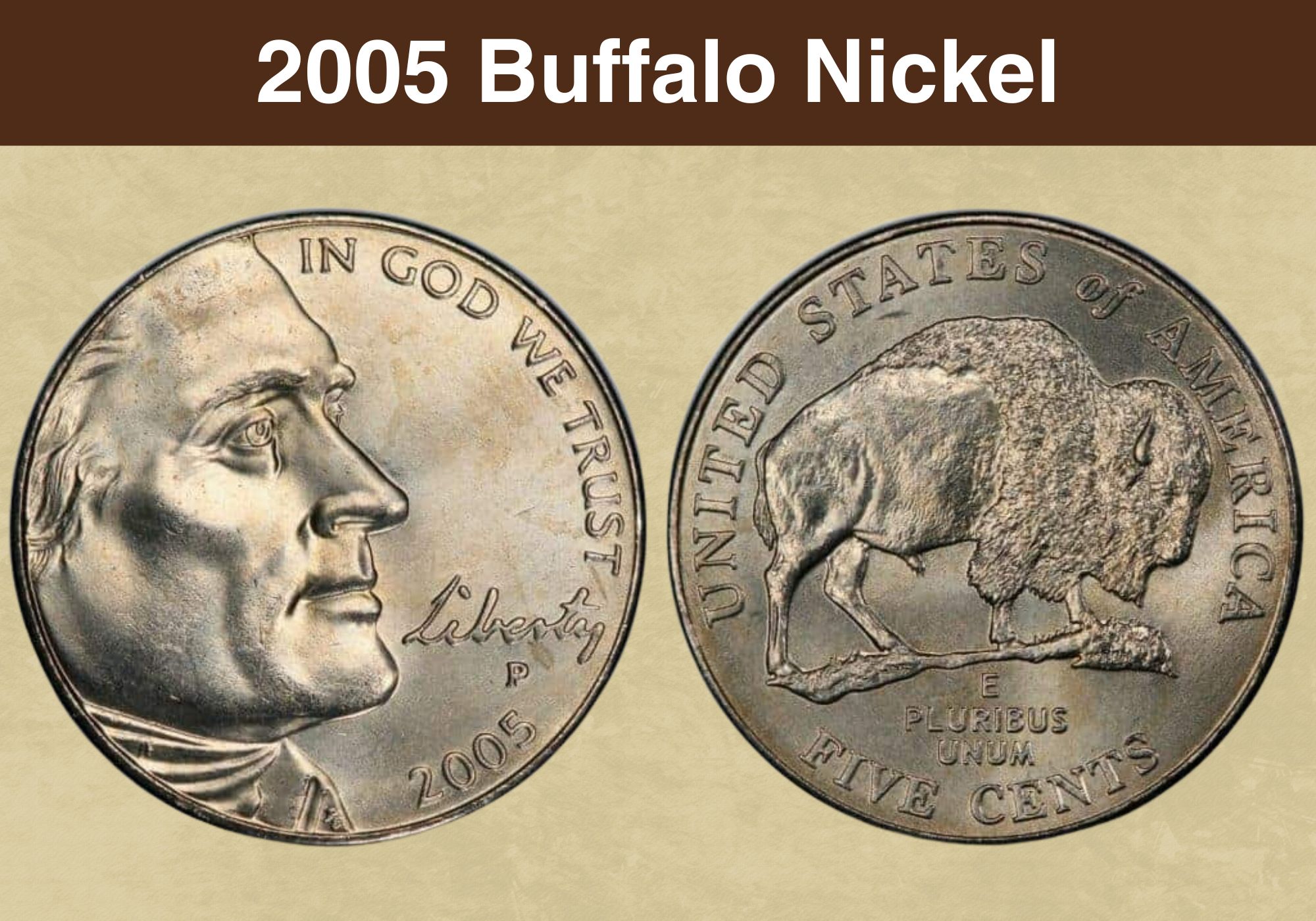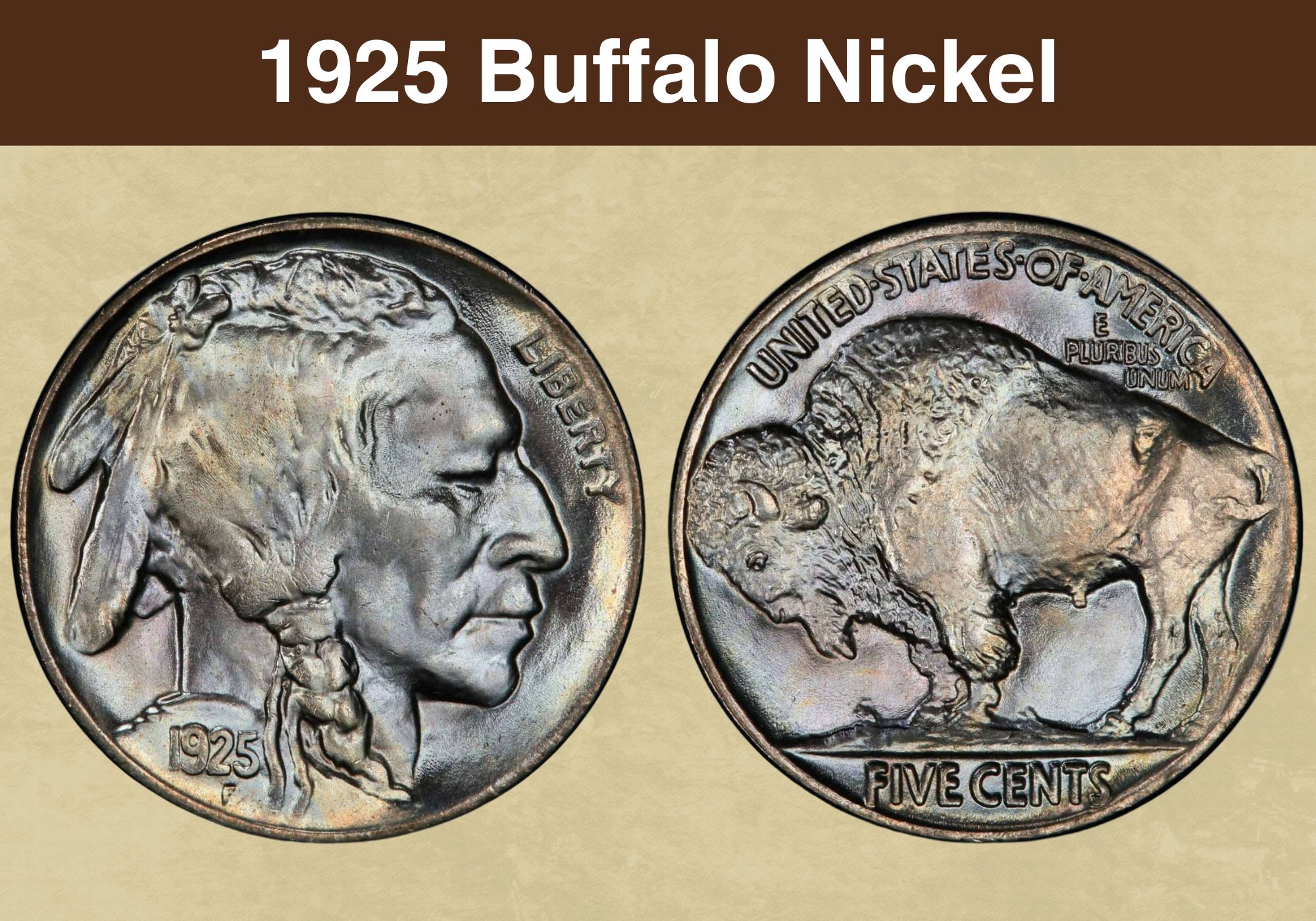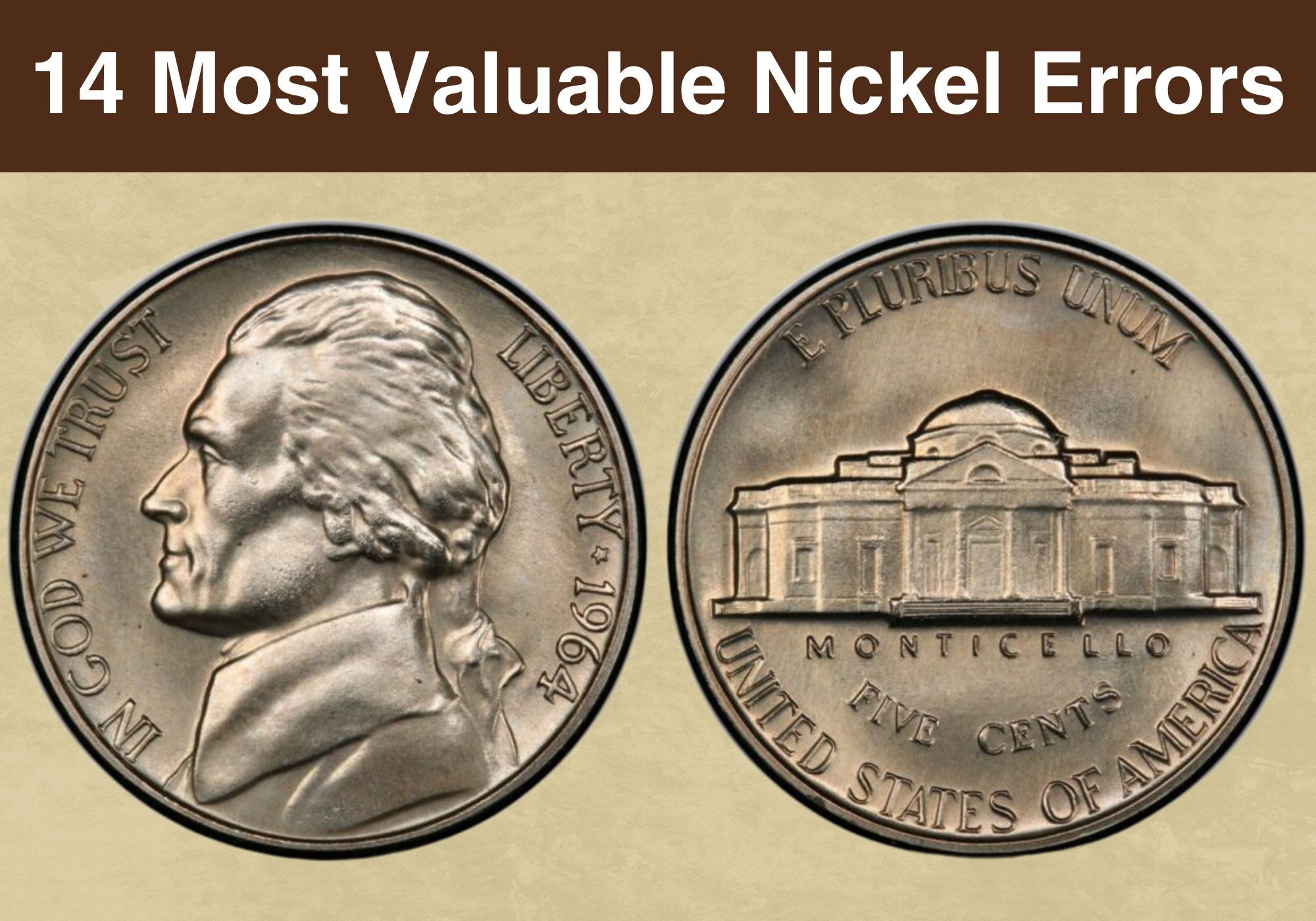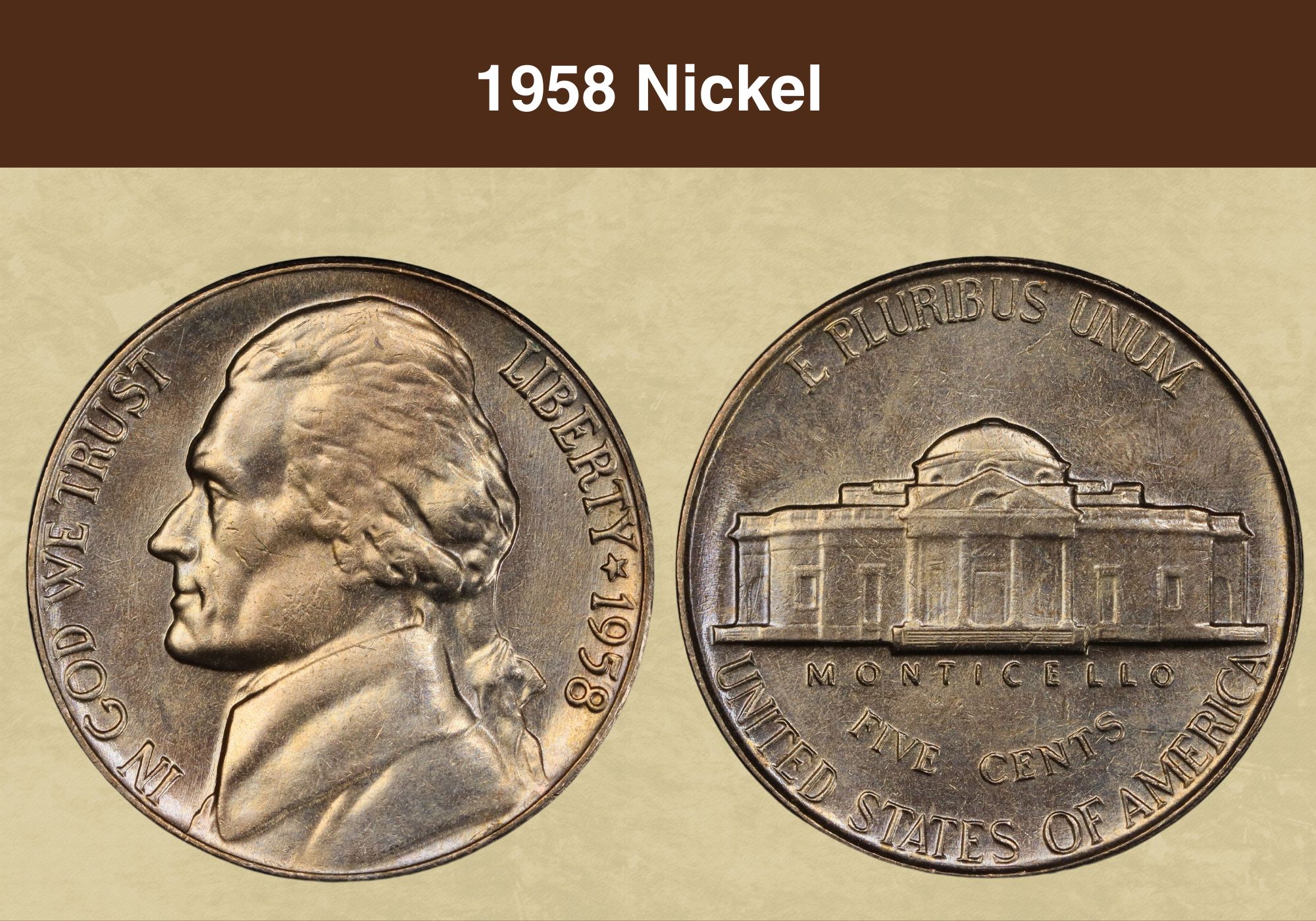
Coin Value Contents Table
- 1958 nickel value Chart
- History of the 1958 Jefferson Nickel
- 1958 Jefferson nickel Types
- Features of the 1958 Jefferson Nickel
- 1958 Jefferson Nickel Grading
- 1958 Jefferson Nickel Value Guides
- 1958 No Mint Mark nickel Value
- 1958 D Jefferson nickel Value
- 1958 proof Jefferson nickel Value
- Rare 1958 Jefferson Nickel Errors List
- Where to Sell Your 1958 Jefferson Nickel ?
- FAQ about the 1958 Jefferson Nickel
People find Jefferson nickels in their pockets all the time, and it is likely to find some minted in the 1950s. The 1958 nickel value is not particularly impressive, but it is possible to get decent money for beautiful and top-quality pieces.
These nickels are 65 years old, which is not much looking from a numismatic perspective. However, they are among the best options for novices to complete new collections. Remember that knowing how to grade them and adequately evaluate their price is crucial.
1958 nickel value Chart |
||
| Condition | 1958 nickel | 1958 D nickel |
| MS 60 | $1.16 | $0.46 |
| MS 65 | $28 | $14 |
| PR 65 | $9.36 | / |
History of the 1958 Jefferson Nickel
Even though the first American 5-cent coins appeared in 1794, the first nickels were Half Dimes. Their production started in 1866.
The first Jefferson nickels are dated in 1938. The designer, Felix Schlag, created the design that was actual until 2004. That year, the US Mint decided to re-design this lovely coin.
1958 Jefferson nickel Types |
||
| Mint | Year | Minted |
| Philadelphia | 1958 nickel | 17,088,000 |
| Denver | 1958 D nickel | 168,249,120 |
| Philadelphia | 1958 nickel proof | 875,652 |
| Total | / | 186,212,772 |
The 1958 nickels were minted at a happy time when the US enjoyed a post-WWII economic boom. Americans discovered a new hobby and started collecting coins en masse. Therefore, the US Mint had a high mintage to keep up with demand.
Also read: Top 10 Most Valuable Nickels Worth Money
Features of the 1958 Jefferson Nickel
Felix Schlag designed both the Jefferson nickel obverse and reverse. These copper coins kept the same look from 1938 to 2004, when the obverse was re-designed.
The obverse of the 1958 nickels
The 1958 Jefferson nickel obverse includes a few recognizable details, including:
- The 3rd President’s portrait in the center
- LIBERTY ★ 1958 on the right
- IN GOD WE TRUST on the left
The reverse of the 1958 nickels
This 1958 Jefferson nickel’s side shows the following:
- The President’s mansion with its name MONTICELLO in the center
- E PLURIBUS UNUM on the top
- FIVE CENTS and the issuing nation’s name at the bottom
- The D mint mark in coins from Denver
1958 Jefferson nickel details |
|
| Face value | Five cents ($0.05) |
| Coin weight | 0.17637 ounces (5 g) |
| Shape | Round |
| Compound | A 75%: 25% ratio of copper and nickel |
| Coin thickness | 0.07677 inches (1.95 mm) |
| Coin diameter | 0.83504 inches (21.2 mm) |
| Edge | Plain |
Other features of the 1958 nickels
The Jefferson nickels minted in 1958 are small cupronickel coins with a diameter of 0.83504 inches (21.2 mm). They have a denomination of $0.05 and a plain edge. Each specimen weighs 0.17637 ounces (5 g), while the thickness needs to be 0.07677 inches (1.95 mm) in well-preserved ones.
Also read: Top 17 Most Valuable Buffalo Nickel Worth Money
1958 Jefferson Nickel Grading
Most 1958 Jefferson nickels come with conditional value because they are still considered modern coins. However, the best-quality pieces, determined by the Sheldon scale, can bring you a premium.
When it is about nickels, experts first check their condition and how many steps in front of Monticello are visible. Most have less than four, making rare specimens with 5 to 6 ones the most collectible and expensive.
| # | Grade |
|---|---|
| 1 | Basal State-1 |
| 2 | Fair |
| 3 | Very Fair |
| 4, 5, 6 | Good |
| 7, 8, 10 | Very Good |
| 12, 15 | Fine |
| 20, 30 | Very Fine |
| 40 | Extremely Fine |
| 50 | About Uncirculated |
| 60 | Mint State |
| 65 | Mint State |
| 70 | Mint State |
Please check our grading guides to know your coin scale, It’s the necessary step to know the exact value of your coin.
Check out now: How to Grade Jefferson Nickel?
1958 Jefferson Nickel Value Guides
The nickel minting took place in two mints in 1958. They produced 186,212,772 coins this year, including less than a million proofs from Philadelphia. Interestingly, the mint in Denver had a ten times higher mintage of regular coins than the most prominent mint.
1958 No Mint Mark nickel Value
The mintage in the Philadelphia mint was 17,088,000 nickels in 1958, which is ten times less than the production of these coins in Denver. Most are still abundant or in use nowadays, making them inexpensive although collectible.
Most collectors avoid circulated 1958 nickels because those in the mint state are present in a high number on the market. However, they are estimated at $0.06 to $0.09. Pieces in pristine condition typically cost $0.10 to $38, with only one deviation. Coins in MS 66 grade often cost about $38.
Experts believe only 75,000 of the 1958 FS nickels still exist, so you can expect them to be costlier than regular pieces. Their price range is approximately:
- $24 for nickels with Full Steps in MS 63 grade
- $28 for nickels with Full Steps in MS 64 grade
- $400 for nickels with Full Steps in MS 65 grade
- $4,150 for nickels with Full Steps in MS 66 grade
One of the scarcest specimens is the Jefferson nickel with Full Steps from 1958 in MS 66+ grade. Its price at an auction in 2019 was an impressive $13,513.
1958 D Jefferson nickel Value
The Denver mint had a high mintage of the 1958 D nickels, precisely 168,249,120 pieces. Such a high number affects their current price, so you can buy one of these coins for $0.06 to $0.09 after spending some time in circulation.
Those in the mint state (MS 60 to MS 65) cost less than five dollars, but you can expect the highest-rated specimens to be more valuable.
For instance, one MS 66-rated coin is estimated at $50, while the best-quality ones rated MS 67 can quickly reach $650 at auctions. In fact, one such nickel in MS 67+ grade sold at a fantastic $2,200 in 2023 on eBay.
Many collectors prefer nickels with Full Steps because it is the look these coins should have based on the original design. The 1958 D FS nickels have a wide price range, depending on their preservation levels, so you should set aside the following sum of money to get one:
- MS 64-rated nickels cost $20
- MS 65-rated nickels cost $30
- MS 66-rated nickels cost $60
- MS 67-rated nickels cost $650
Despite estimation, one 1958 D FS Jefferson nickel in the highest existing grade (MS 67) sold at $6,325 after appearing at Heritage Auctions in 2008.
1958 proof Jefferson nickel Value
Besides regular coins, the Philadelphia mint produced 875,652 proofs in 1958. Experts estimate that about 3,750 of this number are the most collectible DCAM-proof-strike coins that still exist today.
You can expect high prices since they are considered the rarest pieces in the set. Therefore, it is necessary to count on at least:
- $875 for the 1958 PR 66 DCAM coin
- $2,750 for the 1958 PR 67 DCAM coin
- $3,150 for the 1958 PR 68 DCAM coin
- $10,500 for the 1958 PR 69 DCAM coin
Less desirable 1958 CAM proofs come with significantly lower prices. For instance, you can buy one PR 66-graded nickel for $40, while the one rated PR 67 cost $46.
The best-quality pieces in PR 68 and PR 69 grades are a bit more expensive, and you should count on a price range from $135 to $725. Still, the costliest PR 69 coin with cameo contrast won an auction record of $1,116 in 2016.
If you are a collector on a budget or a novice, you can find lovely but affordable 1958-proof nickels on the market. Most cost under $6, while those in PR 67 to PR 69 grades are assessed at $20 to $200. However, one coin from this year in PR 69 grade sold at $820 on eBay in 2018.
Also read: Top 17 Most Valuable Jefferson Nickels Worth Money
Rare 1958 Jefferson Nickel Errors List
The 1958 nickel set is packed with various errors, including some rare and highly desirable to collectors. Such imperfect coins are almost always more expensive than regular ones, so you should carefully inspect each piece you come across.
Inverted D
A few nickels minted in Denver in 1958 came with an inverted (upside down) D mint mark. Regular coins with this error can cost about $15, while Full Steps variations are worth approximately $1,000.
Re-punched mint mark
Although mints struck coin design with a machine, the mint mark striking was a handwork in 1958. This error type appeared because of a human error, so you can see the D letter placed in the incorrect place, upside-down or sideways.
Believe it or not, such nickels are worth more than regular coins, and you can earn $3 to $25 when finding one. Rare pieces in excellent condition and with significant RPM error can cost over $1,000.
Double strike
When the press fails to eject the coin after the first strike, it becomes struck twice or sometimes thrice. Inevitable displacement leads to design duplication and details appearing at the wrong parts of the planchet. Such coins cost up to $200.
Doubled die reverse proof
Some proof coins from Philadelphia came with a doubled die error on the reverse. It typically appeared on MONTICELLO and denomination during minting and could increase the affected piece’s value by tens of dollars.
Nickel struck on the wrong planchet
Since the Philadelphia mint struck other coins besides nickels in 1958, it mistakenly happened that some were struck on the wrong planchet. Therefore, you can notice weird-looking nickels, like:
- 1958 nickels struck on a 1-cent planchet (such coins are worth over $500)
- 1958 nickels struck on a 10-cent silver planchet (such coins are worth $650 to $1,000)
- 1958 nickels struck on a Cuban 1-cent planchet (such coins are worth over $1,000)
Off-center
Improperly positioned coin during striking often ends up with an off-center design and a blank crescent-like area of the planchet. Collectors like such coins, particularly pieces with about 50% to 70% off-center error.
When a particular coin has a recognizable date, you can sell it for $100 to $400. Pieces with 10% off-center are worth approximately $15 to $20.
Die breaks or die cuds
Die breaks happen when the dies are old and damaged. In 1958, they left minor raised lines on the coin surfaces, increasing their value to $5, sometimes up to $100. Pieces with a die cud error can be worth $100 to $150.
Also read: 14 Most Valuable Nickel Errors Worth Money
Where to Sell Your 1958 Jefferson Nickel ?
Now that you know the value of your coins, do you know where to sell those coins online easily? Don’t worry, I’ve compiled a list of these sites, including their introduction, pros, and cons.
Check out now: Best Places To Sell Coins Online (Pros & Cons)
FAQ about the 1958 Jefferson Nickel
What makes Jefferson nickels minted in 1958 rare?
Some nickels, like the 1913 Liberty Head nickels, are scarce and worth millions, but this is not the case with those produced in 1958. Most of these coins are common and readily available, but you can consider the proof DCAM nickels made this year in Philadelphia the rarest in the set.
Which Jefferson nickels minted in 1958 are the costliest in the set?
- The 1958 nickel with Full Steps and in MS 66+ grade sold at $13,513 in 2019 at Legend Rare Coin Auctions
- The 1958 nickel with DCAM quality and in PR 69 grade sold at $10,869 in 2021 at Legend Rare Coin Auctions
- The 1958 D nickel with Full Steps and in MS 67 grade sold at $6,325 in 2008 at Heritage Auctions
- The 1958 D nickel in MS 67+ grade sold at $2,200 in 2023 on eBay
- The 1958 D/D nickel with D/ Inverted D error and in MS 64 grade sold at $1,295 in 2016 on eBay
- The 1958 nickel with CAM quality and in PR 69 grade sold at $1,116 • 07-07-2016 at Heritage Auctions
- The 1958 nickel in PR 69 grade sold at $820 in 2018 on eBay
- The 1958 nickel in MS 66+ grade sold at $588 in 2017 at Heritage Auctions
How much is the nickel from 1958 with No Mint mark worth?
The 1958 nickel value depends on their quality, so you can count on only $0.06 to $0.09 for circulated pieces, while those in the mint state typically cost $0.10 to $38. Only regular nickels in MS 66 grade are worth up to $350, while those with Full Steps are assessed at $2,400.
What are the priciest nickels in the Jefferson series?
The most expensive Jefferson nickel produced in the San Francisco mint is the Full Steps coin from 1954 in MS 67 grade, sold at $35,250 in 2020. Two pieces with Full Steps from Denver share the same record price of $33,600:
- The 1969 D MS 65 nickel sold in 2021
- The 1938 D MS 68+ nickel sold in 2022
Interestingly, one common MS 64-rated nickel minted in the same mint in 1960 reached only a slightly lower price of $32,200 in 2004. The priciest Philadelphia coin in the series is the 1964 SP 68 nickel from Special Mint Set with Full Steps, thanks to the cost of $32,900 reached at an auction in 2016.
Some error nickels are also highly valuable, including:
- 1949 D/S MS 67 nickel – $32,900
- 1942 D/D MS 64 D/Horizontal D nickel – $32,200
- 1940 PR 68 Reverse of 1938 nickel – $28,750
- 1939 MS 67 FS Doubled Monticello nickel – $23,500
- 1939 MS 68 Reverse of 1940 nickel – $23,500

